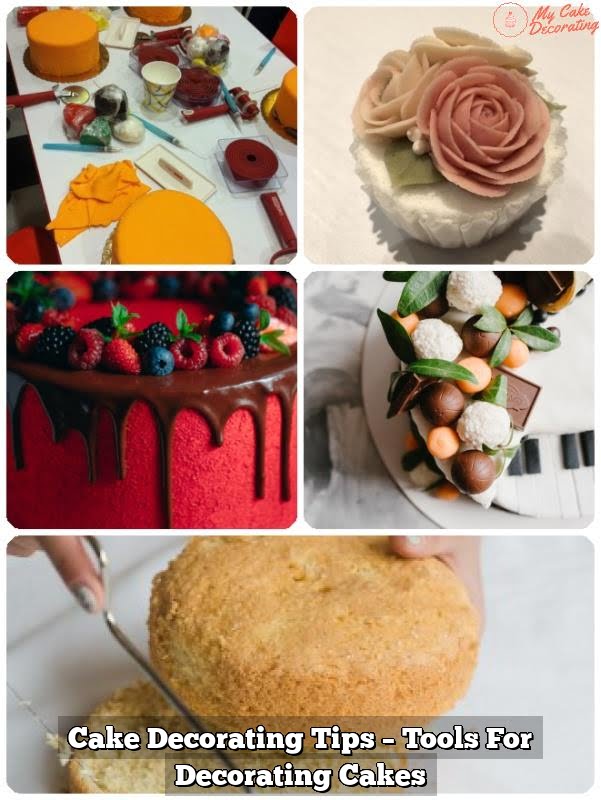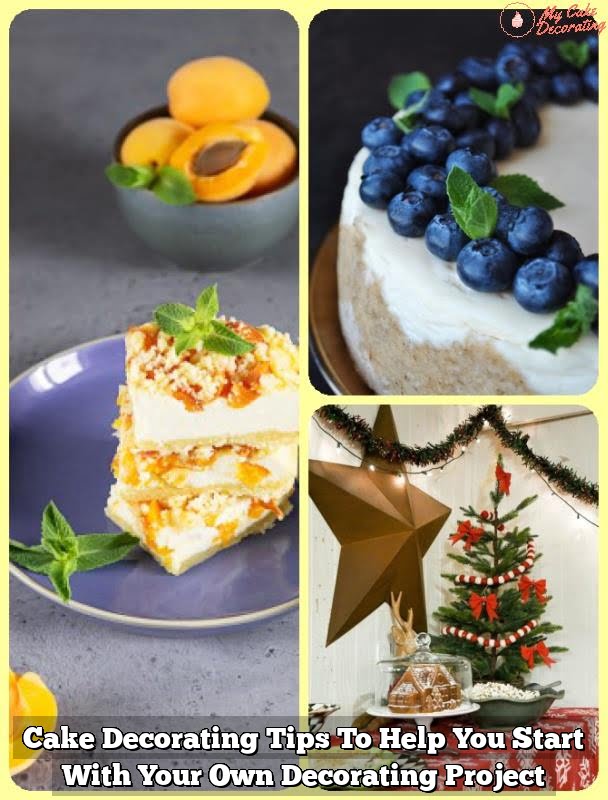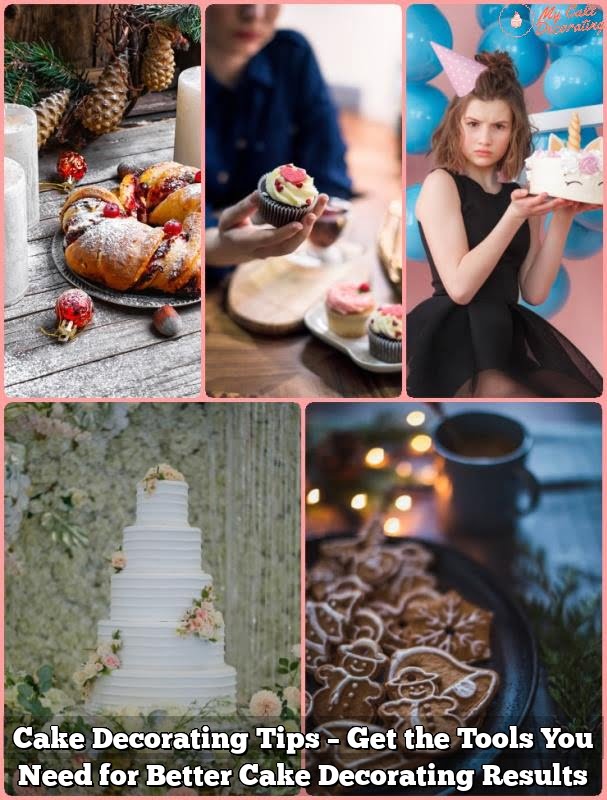Which tips do I use for cake decorating? This question is a crucial starting point for anyone looking to venture into the art of cake decoration. The right choice of piping tips can make a significant difference in the final result of your cake design. Whether you are a beginner or an experienced baker, selecting the appropriate tip is essential for achieving beautiful and intricate decorations on your cakes.
Cake decorating is more than just adding frosting to a cake; it is a form of art that requires precision and creativity. Using the right tips for cake decorating can elevate your creations to new heights and allow you to experiment with various designs and techniques. In this article, we will explore the importance of choosing the correct piping tips for different decorating needs, from basic designs to more complex creations.
By understanding the significance of using the right tips for cake decorating, you can enhance your skills and create stunning cakes that will impress your family and friends. From exploring the basics of cake decorating to learning about advanced techniques, this article will provide valuable insights on how to choose, use, and troubleshoot piping tips effectively. So let’s delve into the world of cake decoration and discover which tips are best suited for your next baking project.
Basics of Cake Decorating
Cake decorating is an art that requires the use of specific tools and materials to achieve beautiful designs on cakes. One of the most essential tools for cake decorating is piping tips, which come in a variety of shapes and sizes to create different patterns and designs. These tips are used with pastry bags to pipe frosting or icing onto cakes in various decorative ways.
In addition to piping tips, other basic tools for cake decorating include a turntable for easy access to all sides of the cake, offset spatulas for spreading icing smoothly, and a bench scraper for creating clean edges. It’s also important to have a good quality mixer for preparing the frosting, as well as food coloring gels or powders to achieve vibrant colors in your decorations.
When it comes to materials, choosing the right type of frosting or icing is crucial for successful cake decorating. Buttercream frosting is one of the most common choices due to its versatility and ease of use. Fondant can also be used for more intricate designs and smooth finishes. Additionally, edible decorations such as sprinkles, edible glitter, and fondant cutouts can add extra flair to your cake designs.
| Tools | Materials |
|---|---|
| Piping tips | Buttercream frosting |
| Turntable | Fondant |
| Offset spatulas | Sprinkles |
| Bench scraper | Edible glitter |
Types of Tips
When it comes to cake decorating, choosing the right type of piping tip can make a significant difference in the outcome of your design. There are various types of piping tips available, each serving a different purpose and creating unique decorations on cakes. Here is a breakdown of some common piping tips used in cake decorating:
- Round Tips: These tips are perfect for creating outlines, writing messages, or adding simple dots or beads to your cake design.
- Star Tips: Star tips produce a beautiful swirl or rosette effect on cakes, ideal for borders, covering large areas, or creating textured designs.
- French Tips: French tips are great for creating intricate lace-like patterns or delicate borders on cakes for a more elegant look.
Understanding the different types of piping tips and their uses can help you achieve the desired results in your cake decorating endeavors. Experimenting with various tips and techniques can also expand your creativity and allow you to create stunning designs that showcase your talent and skill.
- Petal Tips: Petal tips are typically used for creating flower petals, leaves, ruffles, or bows on cakes for a visually appealing and detailed finish.
- Leaf Tips: Leaf tips are designed specifically for making realistic-looking leaves and foliage to complement floral designs or nature-themed decorations on cakes.
- Ruffle Tips: Ruffle tips produce decorative frills, ribbons, or waves on cakes to add texture and dimension to the overall design, perfect for formal occasions or themed parties.
With so many options available, it’s essential to familiarize yourself with the different types of piping tips and practice using them to enhance your cake decorating skills. Whether you’re a beginner looking to master basic techniques or an experienced baker interested in exploring advanced designs, selecting the right piping tip is key to achieving professional-looking results that will impress both yourself and others.
Choosing the Right Tip
When it comes to cake decorating, choosing the right piping tip can make a world of difference in the final outcome of your creation. With the wide variety of piping tips available, selecting the best one for your specific needs can be a daunting task. However, with some guidance and understanding of different types of tips, you can elevate your cake decorating skills to new heights.
Understanding Different Types of Tips
Before delving into how to choose the right tip for your cake decorating project, it is essential to have a basic understanding of the different types of piping tips available. There are various shapes and sizes of tips that cater to different techniques and designs.
For example, round tips are ideal for creating borders and writing on cakes, while star tips are great for creating rosettes and other textured designs. It is crucial to familiarize yourself with these variations to know which tip will work best for the design you have in mind.
Determining Your Design Needs
One key factor in choosing the right piping tip is considering the design you want to achieve on your cake. If you are aiming for intricate floral designs or detailed patterns, a smaller tip with a fine opening would be more suitable.
On the other hand, if you are looking to add larger decorations or create textured effects, a larger tip with a wider opening may be more appropriate. By understanding your design needs in advance, you can narrow down your options and select the perfect piping tip for your project.
Experimenting and Practice
Ultimately, the best way to choose the right piping tip is through experimentation and practice. Don’t be afraid to try out different tips and techniques to see what works best for you. Testing out various piping tips on parchment paper or practice cakes can help you gain confidence in using them effectively.
Remember that practice makes perfect, so don’t get discouraged if your first attempts don’t turn out as expected. With time and dedication, you will become more comfortable with using different piping tips and executing intricate designs on your cakes.
Tips for Beginners
When it comes to cake decorating, using the right tips is essential to achieving beautiful and professional-looking designs. Beginners may feel overwhelmed with the vast array of piping tips available, but starting with basic tips is a great way to build confidence and skills in cake decoration. Here are some step-by-step guides on using basic piping tips for simple cake designs:
- Start by selecting a round piping tip, such as a Wilton #12, for creating outlines, writing messages, or adding simple details to your cakes.
- Fill a piping bag with your desired frosting or icing and twist the top of the bag to prevent any leakage while decorating.
- Practice piping on a flat surface before moving on to your cake to get a feel for controlling the pressure applied to the piping bag.
Once you feel comfortable with basic round tips, you can move on to star-shaped tips, such as a Wilton #18 or #21, for creating rosettes, shells, or borders on your cakes. These tips add texture and dimension to your designs and can be used in various ways to enhance the overall look of your cakes.
- To create simple rosettes, hold the piping bag perpendicular to the surface of the cake and squeeze out frosting in a circular motion until you achieve the desired size.
- For shells or borders, use steady pressure on the piping bag while moving it in a back-and-forth motion along the edge of the cake.
- Experiment with different techniques and designs using basic star-shaped tips to discover what works best for your style of cake decorating.
Remember that practice makes perfect when it comes to using basic piping tips for cake decorating. Don’t be afraid to make mistakes and try new ideas – that’s how you’ll improve your skills and develop your unique artistic touch. With patience and dedication, you’ll soon be creating stunning cake designs that will impress your family and friends.
Advanced Techniques
When it comes to advanced cake decorating techniques, using the right piping tips can make a huge difference in the final outcome of your creation. These intricate piping tips allow you to create detailed designs and intricate patterns that will impress any audience.
One popular option for advanced decorators is the petal tip, which can be used to create beautiful floral designs on cakes. Another favorite among professionals is the star tip, which can add texture and dimension to your decorations with its unique shape.
For those looking to take their cake decorating skills to the next level, investing in specialty tips such as the ruffle tip or basketweave tip can open up a world of creative possibilities. The ruffle tip is perfect for adding delicate frills and waves to your designs, while the basketweave tip allows you to create intricate woven patterns that will elevate your cake decorations to a new level of sophistication.
Experimenting with these advanced piping tips is a great way to challenge yourself and push your creativity to new heights.
While mastering advanced piping techniques may take some practice, don’t be afraid to experiment with different tips and designs. As you become more comfortable working with intricate piping tips, you’ll find that you can create stunning works of art that will leave everyone amazed.
Remember, practice makes perfect, so don’t be discouraged if your first attempts don’t turn out exactly as planned. With patience and perseverance, you’ll soon become a master at using advanced piping tips for complex cake decorations.
Troubleshooting Tips
When it comes to cake decorating, even the most experienced bakers can encounter some common issues while using piping tips. One of the most frustrating problems is when the frosting doesn’t come out smoothly or consistently from the tip. This could be due to air bubbles trapped in the frosting. To solve this issue, gently tap the filled piping bag on a flat surface to release any air pockets before starting to pipe the design on your cake.
Another common problem that bakers face is when the frosting becomes too runny or too stiff, making it challenging to achieve the desired decorations. If your frosting is too runny, try adding more powdered sugar gradually until you reach the desired consistency. On the other hand, if your frosting is too stiff, incorporate small amounts of milk or water and mix well until you achieve a smoother texture that is easier to pipe with.
Additionally, one issue that many beginners encounter is inconsistent pressure while piping different designs on their cakes. The key to maintaining a consistent flow of frosting is to practice steady pressure with your dominant hand while guiding the tip with your other hand. By keeping a steady hand motion and applying even pressure throughout, you’ll be able to create beautiful and uniform decorations on your cakes.
| Troubleshooting Issue | Solution |
|---|---|
| Air bubbles in frosting | Tap piping bag gently on flat surface |
| Runny frosting | Add more powdered sugar gradually |
| Stiff Frosting | Incorporate small amounts of milk or water |
Creative Ideas
When it comes to cake decorating, using different piping tips can elevate your creations from basic to extraordinary. By experimenting with various tips, you can unleash your creativity and make unique designs that will wow your friends and family. Whether you are a beginner or an experienced baker, exploring different piping tips can open up a world of possibilities for your cake decorations.
Floral Designs
One creative idea for cake decoration using piping tips is to create intricate floral designs. Using flower-shaped piping tips or petal tips can help you achieve delicate and realistic-looking flowers on your cakes. You can experiment with different colors and sizes to create a beautiful bouquet or cascade of flowers on your cakes for a stunning and elegant look.
Geometric Patterns
For a modern and trendy aesthetic, consider using piping tips to create geometric patterns on your cakes. With the right tips, you can easily pipe straight lines, circles, squares, or even intricate geometric shapes onto your cakes. This style of decoration is perfect for contemporary-themed events or celebrations where you want a sleek and stylish cake design that stands out.
Texture Play
Another creative idea for using various piping tips is to play with textures on your cakes. Try using star-shaped tips or grass/hair tips to add texture to your decorations, creating visual interest and depth on your cakes. This technique works well for themed cakes like woodland, beach, or rustic designs where adding texture can enhance the overall look of the cake.
By incorporating these creative ideas into your cake decorating repertoire, you can take your creations to the next level and impress everyone with your skills. Don’t be afraid to experiment with different piping tips and techniques to discover what works best for you and your unique style. Remember that practice makes perfect, so keep honing your skills and pushing yourself creatively to master the art of cake decorating using various piping tips.
Conclusion
In conclusion, choosing the right tips for cake decorating is crucial in achieving beautiful and professional-looking results. The type of piping tip used can make a significant difference in the overall design of your cakes, whether you are a beginner or an experienced baker. By understanding the basics of cake decorating tools and materials, as well as learning about the different types of piping tips available, you can elevate your creations to a whole new level.
Experimenting with various piping tips not only allows you to unleash your creativity but also helps you discover new techniques and styles that can set your cakes apart. Whether you prefer simple and classic designs or more intricate and detailed decorations, there is a wide range of piping tips to choose from to suit your preferences. Don’t be afraid to try out different tips and techniques to find what works best for you and your unique vision.
As you continue on your cake decorating journey, remember that practice makes perfect. Along the way, you may encounter some common issues while using piping tips, but don’t let that discourage you. Troubleshooting these challenges will only help you grow as a decorator and refine your skills. So go ahead, explore the world of cake decorating tips, unleash your imagination, and create stunning edible works of art that will impress everyone who sees them.
Frequently Asked Questions
Which Tip to Use to Decorate Cake?
When it comes to decorating a cake, the tip you choose depends on the desired effect. For intricate designs and fine details, small round tips are ideal. For frosting borders and outlines, star tips can create a beautiful finish. Straight edges or petal tips can be used for creating flowers and other decorative elements.
How Do You Know Which Piping Tip to Use?
Knowing which piping tip to use when decorating a cake requires a good understanding of what each tip can achieve. It’s important to consider the size and shape of the tip, as well as the type of decoration you want to create. Experimenting with different tips and practicing various techniques will help you become familiar with their uses.
Which Decorating Tips Are Most Often Used for Writing on Cakes?
The decorating tips most often used for writing on cakes are round tips, specifically sizes 1-3. These small round tips allow for precise lettering and detailing when piping messages or names onto cakes. The fine tip size enables you to create clean lines and legible text that adds a personal touch to your cake designs.

Welcome to my blog about home and family. This blog is a place where I will share my thoughts, ideas, and experiences related to these important topics. I am a stay-at-home mom with two young children. I hope you enjoy reading it! and may find some helpful tips and ideas that will make your home and family life even better!





